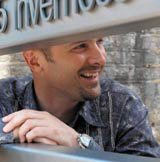Small wonders show the way
Thom Newton argues that small specialists provide a better service than larger groups, which are always looking to boost their revenue

At some time or other, those of us who work consultancy-side will have questioned whether we are the right size to satisfy the needs of our clients. Too small and we worry about whether we can deliver; too big, and we are concerned about maintaining close relationships with our clients. But does size really matter?
We are an industry undergoing structural change, and competing strongly is the only way to survive. There will be winners and losers in all sizes of design group, but those that remain will be better managed, more professional and focused on providing the best service for their clients.
Our industry is broad. On the one hand, there are a number of large, mostly international groups; on the other, a proliferation of specialist businesses. Most of those are small, but some have managed to grow successfully without succumbing to the blandishments of the big groups.
The big groups are particularly well placed to capitalise on global brand exercises that are being implemented across several regions simultaneously. Such projects are difficult to handle without global reach. But the pressure is continually on for the directors at the larger agencies to generate revenue. That’s why they disappear as the project gets going – not usually the best way to retain loyalty from clients.
This is one of the reasons why small groups can be successful. They find it easier to balance the involvement of their principals across new business and client work. They also tend to be quicker on their feet.
The challenge for the middle-sized players is to avoid being squeezed out. They compete by combining a clear focus with excellent quality work and good client relationships. Clients value agencies that can field a proven team and have sufficient experience of their issues to get to the solution quickly.
Much of the argument around large versus small design consultancies revolves around the respective merits of specialisation versus one-stop shopping.
Specialisation has many advantages: it often feels far more credible and reassuring to a client if you focus on fewer key areas of the design and branding mix. The global goliaths would obviously disagree – having built their entire strategies around being one-stop shops. But I have never met a client, at least one not motivated exclusively by cost, who totally buys into this philosophy.
It may once have been the case that working with more than one design group was difficult to manage and had the potential to have a negative effect on consistency, but as design groups have become more focused and clients have become more informed, this is no longer an issue. Working with specialists seems to be perceived as the best way to get excellence – to cherry-pick the best – and however much the large agency groups say they have the best of all disciplines under one roof, no one really believes them.
You could argue that assembling a team to manage diverse communications programmes, such as mergers and acquisitions, or global repositioning, is quicker and easier if the PR, branding and advertising agencies are on the same phone list.
But the fact that these agencies work within the same group does not guarantee that they will gel better than independent groups. Often a culture of competition between group agencies is so well established that switching to cooperation mode is difficult.
You only have to look at the history of the industry to know that these things go in cycles. Smaller consultancies are snapped up by the big boys, and then the personnel work through their earn-outs, or get fed up with the bureaucracy and management distractions and splinter off to create small consultancies again. Before long, another big company is sniffing around, looking for their specialist skills or their client list, and the whole thing goes round again.
How we do it may differ (although probably not much), but, big or small, we all need to win and keep clients. Generalist or specialist, being client-focused will determine who succeeds.
We are biased, but believe that there is an optimum size for consultancies. What is important to us – enjoying the process, teamwork and staying close to our clients – we believe is better served when you all know each other’s names. In the design and branding world, it is tough to retain the integrated and team-driven approach when you go much beyond 50 people.
Even if the size of the consultancy isn’t crucial, whether your client is big- or small-minded really will be the difference.
Thom Newton is director of 35
Rules of Engagement
• Remain client-focused regardless of size or specialism
• Be integrated and cohesive as a team
• Be honest about what you don’t know
• Poorly delivered work will undermine your offer, whatever it is
• If you don’t enjoy the process, nor will your clients
-
Post a comment




